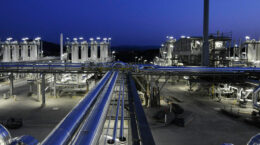50+ years' of experience developing clean-air solutions
Some air cleaners are highly effective at particle removal. However, removing gaseous pollutants can be an even greater challenge.
With over 50 years of experience developing clean-air solutions—including the invention of the catalytic converter—BASF has the know-how needed to provide emission-control catalyst technologies that reduce carbon monoxide, volatile organic compounds, nitrogen oxides, ammonia, particulate, ozone, and more—while optimizing performance, minimizing capital, and ensuring regulatory compliance.
BASF demonstrates added value based on a market-driven, sustainable business model that balances both environmental and economic interests—bringing cleaner air to a healthier, greener future.





